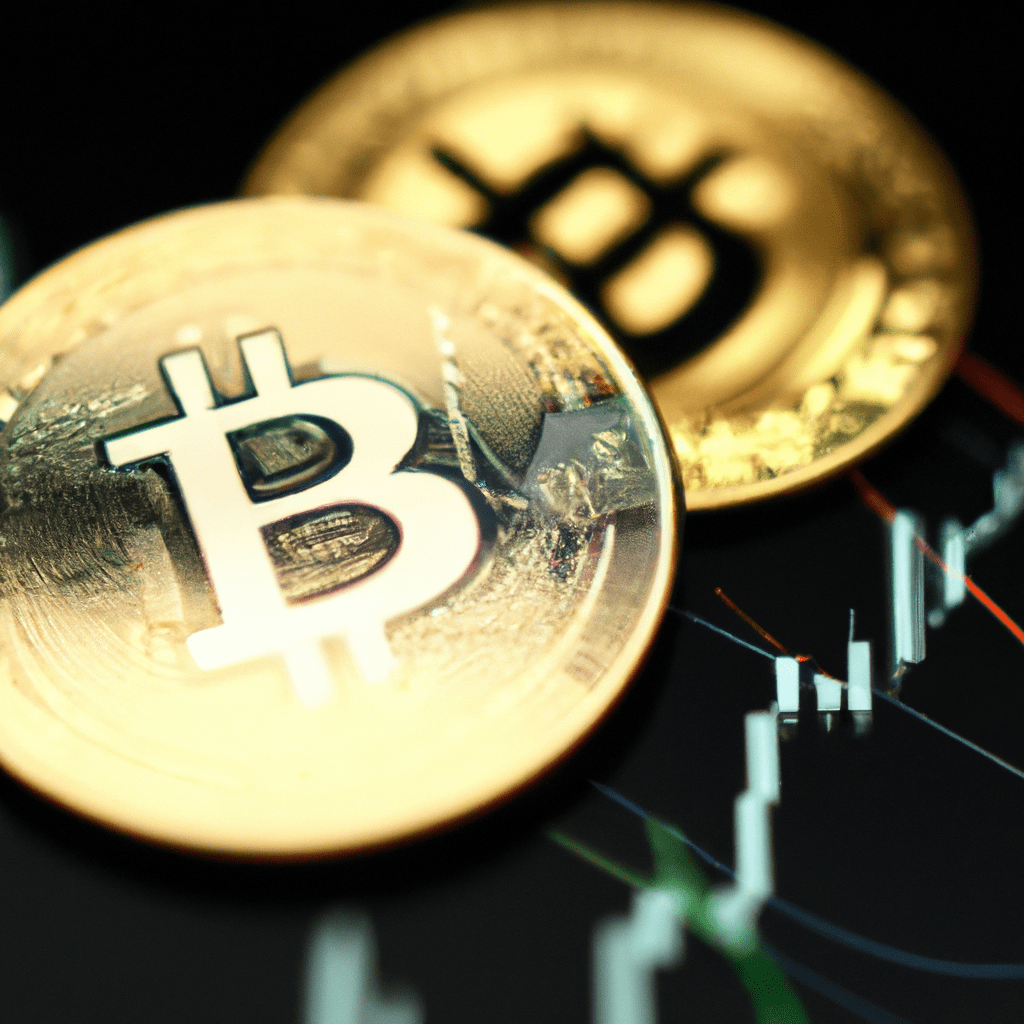

“The Triple Shock of U.S. History’s Largest Bank Failures” provides an in-depth analysis of the unprecedented collapse of three major banks in the U.S. in 2023, which marked a significant chapter in the nation’s banking history. This article explores the aftermath of Silvergate Bank’s voluntary liquidation, followed by the downfall of Silicon Valley Bank (SVB), and the subsequent collapse of Signature Bank. Amidst the chaos, crypto assets like bitcoin showcased remarkable resilience, while other repercussions, such as the de-pegging of stablecoins, added to the turmoil. These events shed light on the fragile nature of the modern banking system and raised concerns regarding monopolistic tendencies within the industry.

▶ [Kucoin] Transaction fee 0% discount CODE◀
The Triple Shock of U.S. History’s Largest Bank Failures
The U.S. economy experienced an interesting year in 2023, marked by unprecedented upheaval within the American banking sector due to the combined collapse of three major banks, the largest the nation has historically seen. Amidst this chaos, crypto assets such as bitcoin demonstrated remarkable resilience, even capitalizing on the banking sector’s misfortunes. Concurrently, other repercussions unfolded, including the de-pegging of the second-largest stablecoin, managed by Circle, following the disclosure of difficulties in retrieving $3.3 billion from the now-insolvent Silicon Valley Bank (SVB).
Introduction
In 2023, the U.S. witnessed the second, third, and fourth largest bank failures in its history, culminating in the failure of four significant institutions: Silvergate Bank, Silicon Valley Bank (SVB), Signature Bank, and First Republic Bank. The cascade of collapses began with Silvergate Bank, which set off a chain reaction with its voluntary liquidation announcement on March 8, 2023.
1. Background
1.1 The U.S. banking sector in 2023
During 2023, the U.S. banking sector faced considerable challenges, with a series of major bank failures causing significant disruptions. While the sector had been relatively stable in the preceding years, the events of 2023 revealed underlying vulnerabilities and weaknesses within the financial system.
1.2 Previous bank failures in U.S. history
The history of the U.S. banking sector is peppered with instances of bank failures, some of which had far-reaching consequences for the economy. Previous examples include the collapse of Washington Mutual in 2008 during the global financial crisis and the failure of numerous banks during the Great Depression in the 1930s.

2. The Collapse of Silvergate Bank
2.1 Voluntary liquidation announcement
On March 8, 2023, Silvergate Bank, known for its cryptocurrency-friendly services, announced its decision to voluntarily liquidate. This announcement sent shockwaves through the financial industry, signaling the beginning of a series of bank failures.
2.2 Connection with FTX and Alameda Research
One of the contributing factors to Silvergate Bank’s collapse was its connection with the fallen crypto exchange FTX and the quantitative trading firm Alameda Research. The investigation by the U.S. Department of Justice into these connections further eroded investor confidence in the bank.
2.3 Reported losses
Although Silvergate Bank’s reported losses of $1 billion were not as substantial as those of other failed banks, its collapse set in motion a chain of events that would lead to the downfall of larger institutions.
3. The Downfall of Silicon Valley Bank (SVB)
3.1 The third-largest bank collapse in U.S. history
On March 10, 2023, Silicon Valley Bank (SVB) collapsed, becoming the third-largest bank failure in U.S. history. With $209 billion in assets at the time of its failure, SVB’s collapse sent shockwaves through the financial industry and raised concerns about the stability of other banks.
3.2 Shuttering by FDIC and California Department of Financial Protection and Innovation
Following its collapse, SVB was shuttered by the U.S. Federal Deposit Insurance Corporation (FDIC) and the California Department of Financial Protection and Innovation. This action left significant uncertainty among depositors with uninsured deposits exceeding the insured $250,000 limit.
3.3 Uncertainty over uninsured deposits
SVB’s closure on a Friday left many depositors in a state of uncertainty over the weekend, unsure about the status of their uninsured deposits. The lack of clarity added to the overall panic and anxiety surrounding the collapse of the bank.
4. The Depegging of Stablecoins
4.1 Impact of SVB’s collapse on Circle’s USDC
The collapse of SVB had a significant impact on Circle’s usd coin (USDC), the second-largest stablecoin. As a result of SVB’s failure, Circle revealed difficulties in retrieving $3.3 billion from the now-insolvent bank, leading to the depegging of USDC from its targeted $1 parity.
4.2 Depegging of additional stablecoins
The depegging of USDC had a ripple effect in the stablecoin market, leading to the depegging of five additional stablecoins from their dollar value. This sudden loss of stability and the erosion of trust in stablecoins raised concerns among investors and stakeholders.
4.3 Circle’s commitment to cover potential shortfall
In response to the depegging incident, Circle issued a statement committing to cover any potential shortfall. This commitment aimed to reassure users and investors and demonstrate Circle’s dedication to maintaining the stability of the USDC stablecoin.
5. Takeover of Signature Bank
5.1 Regulator takeover and government intervention
In another major development, New York regulators and the FDIC took over Signature Bank, a crypto-accommodating bank with assets amounting to $118 billion. This step was part of a broader government intervention and reflected the seriousness of the situation.
5.2 Bank Term Funding Program and Exchange Stabilization Fund
The U.S. government and central bank responded to the banking crisis by announcing a Bank Term Funding Program and establishing an Exchange Stabilization Fund for domestic banks. These measures aimed to provide support and stability to the financial system during this tumultuous period.
5.3 FDIC assurance for uninsured depositors
In an effort to restore confidence, the FDIC assured full coverage for all uninsured depositors of both SVB and Signature Bank. This assurance helped mitigate the panic and uncertainty surrounding the fate of uninsured deposits.
6. First Republic Bank’s Stock Plummet
6.1 Stock decline and failure to rebound
First Republic Bank experienced a significant decline in its stock value and failed to rebound following the collapse of SVB. The market’s lack of confidence in the banking sector and the ongoing banking crisis led to a sharp decline in the bank’s stock price.
6.2 Unprecedented deposit outflows
In the wake of SVB’s downfall, First Republic Bank faced unprecedented deposit outflows, with $100 billion in deposits leaving the bank. This mass exodus of funds further destabilized the bank and intensified concerns about its viability.
6.3 FDIC search for potential buyers
As the situation worsened for First Republic Bank, the FDIC initiated a search for potential buyers to rescue the struggling institution. This search aimed to find a solution that would minimize the impact on depositors and maintain some level of stability in the banking system.
6.4 Seizure and sale to JPMorgan Chase
On May 1, 2023, regulators seized and sold First Republic Bank to JPMorgan Chase, making it the second-largest U.S. bank by assets to collapse following Washington Mutual. This transition marked a significant shift in the banking landscape and posed additional challenges for regulators and the financial industry.
7. Implications and Reassessment of Banking Soundness
7.1 Fragility of the financial ecosystem
The series of bank failures in 2023 unveiled the inherent fragility of the modern financial ecosystem. The inability of major banks to withstand external shocks and the rapid contagion effect demonstrated the need to reassess the resilience and stability of the banking system.
7.2 Consolidation of the modern banking structure
The collapse of several major banks during the crisis led to the consolidation of the modern banking structure. Smaller banks were absorbed by larger institutions, resulting in a dense unification of assets and influence. This consolidation raised concerns about the concentration of power in the banking sector and its impact on competition and consumer choice.
7.3 Apprehensions about systemic vulnerabilities and monopolistic inclinations
The banking crisis of 2023 heightened apprehensions about systemic vulnerabilities within the financial system. The simultaneous failure of multiple banks and the resulting government intervention sparked debates about the potential monopolistic inclinations of the banking sector and the need for enhanced oversight and regulation.
Conclusion
The U.S. banking crisis in 2023 shook the financial industry and the wider economy, with the collapse of major banks sending shockwaves through the system. The events of that year revealed the fragility of the financial ecosystem and prompted a critical reassessment of banking soundness. The consolidation of the modern banking structure and the concerns about monopolistic tendencies raised significant questions about the future of the banking sector. As the industry seeks to recover and rebuild, it must address these challenges and work towards a more resilient and robust financial system.
▶ [Kucoin] Transaction fee 0% discount CODE◀

RELATED POSTS
View all






